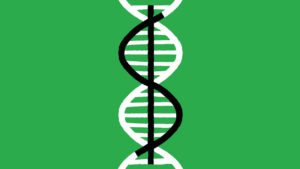For many, 2023 was the year of the chip. Just ask anyone holding shares in Nvidia, whose stock rose by 246%. But it was also the year of the Sloane Pant. The popular tailored trouser helped send the shares of Abercrombie & Fitch, a 132-year-old clothing firm, up by 274% (see chart).

A decade ago Abercrombie’s brand was toxic. Now it is all the rage. The company has been through one of the fashion industry’s most remarkable glow-ups. Gone are the sexualised black-and-white catalogues and snooty staff. It still sells its famous “Fierce” cologne, but no longer pumps it through the air ducts. On August 28th the company lifted its forecast for revenue growth for the year to 13%. Although the market had hoped for more—its shares fell on the news—that growth would far outpace the 0-2% that McKinsey, a consulting firm, predicts for America’s fashion industry. Even after the stumble, Abercrombie’s shares are up by around 50% this year.
This is not Abercrombie’s first reinvention. In 1992 Mike Jeffries, a retail executive, was tasked with turning around what was then a faded sporting-goods seller, which he did by targeting teenagers with preppy, tight and low-cut clothing. In 1996 Mr Jeffries summed up its strategy in an interview: “Candidly, we go after the cool kids…Are we exclusionary? Absolutely.”
That attitude gradually came to grate on shoppers. Mr Jeffries refused to stock women’s sizes beyond a ten (a British 14)—and anything in black or purple. He also wrote a 29-page “Look Book” for employees. His obsession with policing appearance led to discrimination lawsuits from employees. The company fought one claim, by a Muslim employee whose hijab violated the company’s policy, all the way to America’s Supreme Court, where it lost.
Mr Jeffries also made the brand rigid. He crafted intricate back stories for its product lines: RUEHL was all about “the great American kid who moves to New York to be successful”; Gilly Hicks, a lingerie line, was named for a character who lived in an Australian manor house.
Whereas Mr Jeffries told consumers what they wanted, Fran Horowitz, who took over as chief executive in 2017 after 15 consecutive quarters of shrinking sales, is listening instead. She talks up Abercrombie’s “chase capabilities”—industry-speak for keeping inventory low and pouncing on trends. On her watch the company has made better use of data to understand what products to offer and which customers to target, notes Dana Tesley of Tesley Advisory Group, a consultancy.
Instead of going after teens, Abercrombie now targets 25- to 40-year-olds—many of whom might once have spent their babysitting money on its camisoles. But gen-Z customers love it, too, says Casey Lewis, who blogs about youth culture. “It’s just seen as…an ‘it’ brand,” she says. Young consumers may turn to fast-fashion firms such as Shein for the cheapest wares, but they look to Abercrombie for stylish clothes at reasonable prices. And leopard print—as seen on TikTok. Abercrombie’s spotted cardigan is selling fast. ■
To stay on top of the biggest stories in business and technology, sign up to the Bottom Line, our weekly subscriber-only newsletter.

















